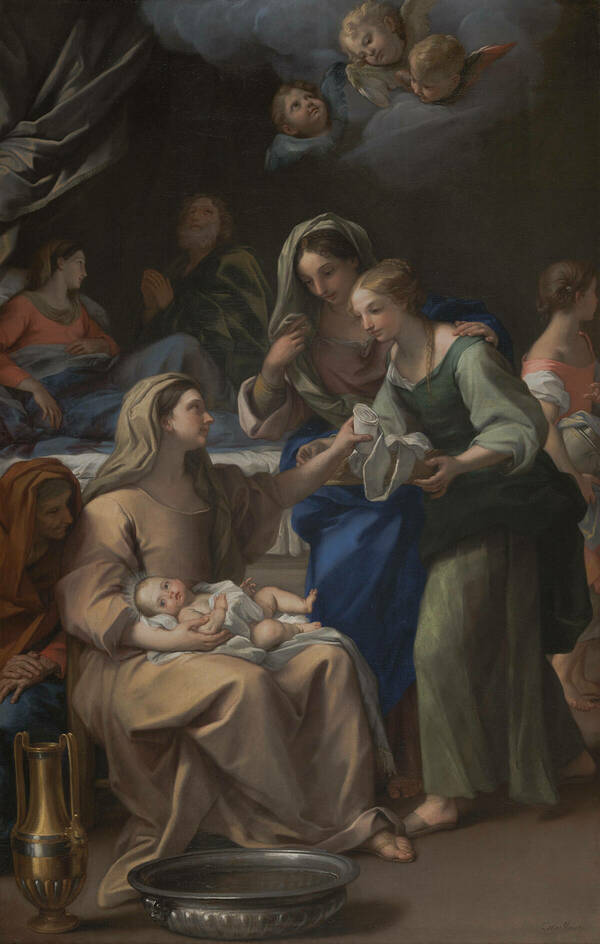
April 1, 2024
Notre Dame, IN: The Raclin Murphy Museum of Art is pleased to announce the arrival and installation of a major altarpiece, The Birth of the Virgin, by the Italian Baroque painter Carlo Maratti. The painting is a long-term loan from the Cummins family.
Originally commissioned in 1681 or 1682 by the canons of the Church of Santa Maria dell’Anima in Rome, the painting shows attendants caring for the newborn Mary, who turns to look at us. In the background, Anne rests in bed, her husband Joachim at her side, his hands clasped in prayer. The church for which it was commissioned is and remains the German parish in Rome.
“Impressive for both its masterful execution and grand scale, Carlo Maratti’s Birth of the Virgin adds significantly to the collection of sacred art featured at the Raclin Murphy Museum,” said Cheryl Snay, curator of European and American Art before 1900. “Seventeenth-century patrons admired the baroque artist’s sensitive handling of this favorite subject matter, making him one of the leading painters in Rome. We are fortunate to be able to present such a coveted example to our community.” Maratti is often seen as the last major artist of the classical tradition in Rome, which originated with Raphael and Michelangelo. From his studio in Rome, he executed numerous international commissions. In 1664, he became the director of the Accademia di San Luca, Rome.
The altarpiece hung in the church until 1685, when the canons decided to decline the commission as too costly. Maratti then sold the painting to Count Friedrich Christian von Schaumburg-Lippe, who moved it to his home in Germany. Numerous preparatory sketches for the altarpiece survive in Madrid, Windsor, and Düsseldorf.
“This extraordinary work of art by one of the great masters of the late Roman Baroque is an exquisite opportunity for all visiting the Raclin Murphy Museum of Art,” shares Museum Director Joseph Antenucci Becherer. “The generosity of the Cummins family celebrates the newly opened Museum and the ever-increasing role of the life of the arts at the University of Notre Dame and the entire region.”
The monumental altarpiece is installed on the balcony flanked by the entrances to the Gallery of European Art before 1700 and the Mary, Queen of Families Chapel. Although the origins of a museum collection at the University date to 1875 and include many liturgical images, the scale and grandeur of this altarpiece is an exceptional addition.
###
About the Raclin Murphy Museum of Art
With origins dating to 1875, the Raclin Murphy Museum of Art (formerly Snite Museum of Art) is one of the oldest and most highly regarded university art museums in America. Founded on the principle that art is essential to understanding individual, shared, and diverse human experiences and beliefs, the Museum encourages close looking and critical thinking. Experiences with significant, original works of art are intended to stimulate inquiry, dialogue, and wonder for audiences across the academy, the community, and around the world— all in support of the University of Notre Dame’s Catholic mission. The renowned permanent collection contains more than 30,000 works representing many cultures and periods of world art history.
For more information, visit raclinmurphymuseum.nd.edu.
Media contact:
Gina Costa
Communications Program Director
Raclin Murphy Museum of Art
574-631-4720
gcosta@nd.edu